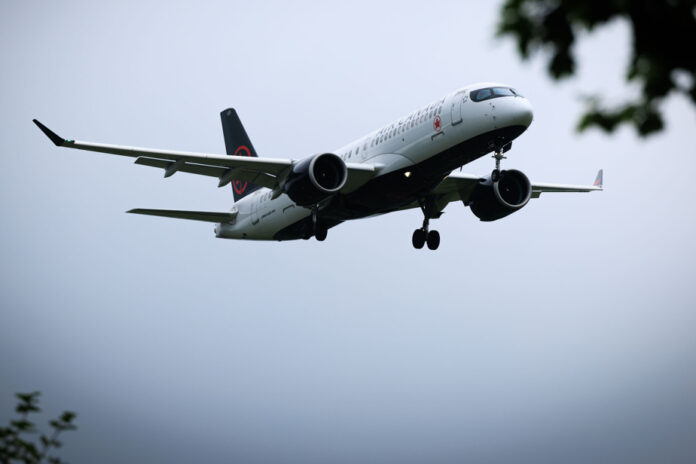Canada’s two largest airlines have seen a much higher proportion of their flights delayed than many of their US peers, according to data compiled by an aviation data firm.
Overall, only half of Air Canada’s flights were on time between June 19 and July 16, statistics provided by Cirium show.
By comparison, 64% of WestJet flights landed on time.
Flights are considered on time if they land a maximum of 15 minutes later than their scheduled arrival time.
These figures contrast with the performance of the five largest airlines in the United States, whose punctuality rates vary between 68% and 83%.
There are several reasons for tarmac delays in Canada, which are well below the industry-targeted 80% on-time rate.
To meet growing summer demand — Air Canada now flies 140,000 passengers a day — airlines are flying their planes more often, said John Gradek, a lecturer in McGill University’s aviation management program. . This practice can cause problems that delay travelers across the country.
“Existing planes work harder,” he said. This leaves less time for maintenance between flights and overnight.
“If you don’t give the mechanics enough time to fix glitches on a regular basis, they will catch up with you. And then you end up with an unusable airplane that can’t fly. »
Half of Air Canada’s 18 wide-body A330s and most of its 76 narrow-body Airbus A319s, A320s and A321s — more than 40 percent of its fleet — are over two decades old.
“These planes have long needed a lot of maintenance…to fly reliably,” Gradek said.
Crew shortages can also play a role in high season. It’s more difficult to find a replacement pilot or flight attendant when each plane flies more often — or when delays accumulate, exceeding the “duty times” employees are allowed to work during a shift. given period.
Air Canada has recognized the strain on its network during this peak travel season.
“When operating at maximum capacity, the system, like any other, can slow down processes and take longer to recover from a problem. That said, many delays have been relatively short,” carrier spokeswoman Angela Mah said in an email.
Figures show that approximately 93% of Air Canada trips and 98% of WestJet trips reached the gate less than two hours late.
Thunderstorms have also caused their share of problems this summer, Air Canada noted. During the 40-day period between June 1 and July 10, 31 days experienced “weather-related disruptions”, compared to 20 days during the same period in 2019, the Montreal-based company said.
“Our Montreal global hub has experienced numerous thunderstorms over the past few weeks, including multiple red alerts — requiring operational shutdowns due to lightning — which have caused delays. Similar situations have occurred frequently in eastern North America, where we have a high volume of flights,” Ms. Mah explained.
She also pointed to the shortage of air traffic controllers – in Canada and the United States – which forces planes to wait before landing.
This time spent circling the runway can also add hours to flight crews’ shifts each week, bringing them closer to their 28-day cap and leaving them with less flexibility to fill staffing gaps before the end of the month.
“In the wake of these events, Air Canada’s goal is to get its aircraft and their crews back on track and get our customers back on the road as soon as possible,” Ms. Mah continued.















